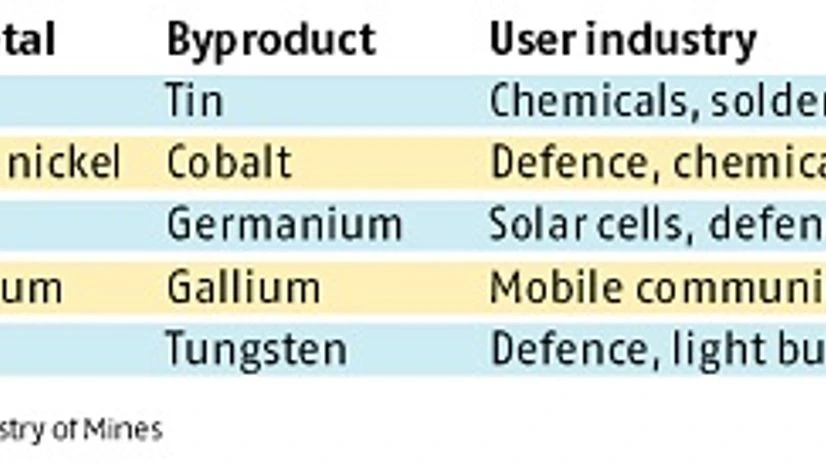Despite the presence of rare earth minerals in the country, the consumer durable sector, one of the primary users of these minerals, continues to meet a major chunk of its demand through imports as domestic mining firms find the extraction process risky and expensive.
Metals and minerals such as tin, cobalt, lithium, germanium, gallium and tungsten are considered strategic because their substitutes are limited and their production is often concentrated in a few geographies.
As many of these can only be produced as a by-product of base metals extraction, the potential for accelerating production and supply on a standalone basis is limited. Inconsistent mining regulations, legislative regimes and environmental risks are also cited as reasons.
Tungsten and tin by-products of gold, copper and nickel, respectively, are used in the defence sector. Germanium has use in the solar power industry while gallium is used in mobile communication technology. Interestingly, all these minerals are available aplenty in China. “China already has a practical global monopoly in several scarce minerals with export taxes, and can easily out-compete any newcomers on price,” said Kameswara Rao, partner, PwC.
According to the mines ministry, these minerals are expected to be extracted by the miners from the blocks that are being tendered now and would show results in the next five to six years.
Also Read
Companies in the US are compensated for extracting by-product metals but in India, the government does not give any subsidy. Therefore, the companies feel that any investment in this endeavour would not give them the desired results in the form of profits.
According to Duggal, there is demand for these minerals in the domestic market but the country requires research and development expertise for their extraction. His company is actively making technological advancements to be able to mine such rare minerals.
A technological study is currently underway to treat and convert the residue from its zinc smelter plant into a lead.
Under the current norms for atomic minerals, mining of such minerals cannot be done by the private sector of the mining area contains 0.75 per cent thorium content. According to Rao, a better option is to partner with other countries where such minerals are available in more economic proportion.
India has 44.91 million tonnes of cobalt resources. Of this, 69 per cent is in Odisha and the remaining 31 per cent is in Nagaland (five million tonnes) and Jharkhand (nine million tonnes). At present, no production is done from the indigenous ores.
The major producers of germanium are the US, China and Russia. Around 30 per cent of the total germanium consumed is produced from recycling scrap. China, Germany, Kazakhstan and Ukraine are leading producers of gallium.

)
